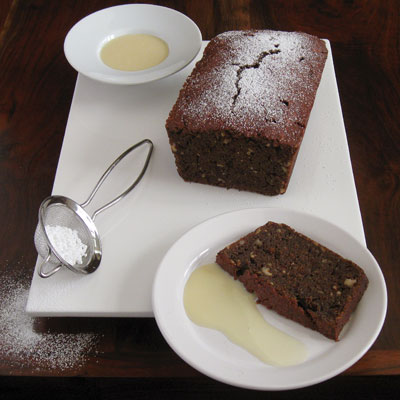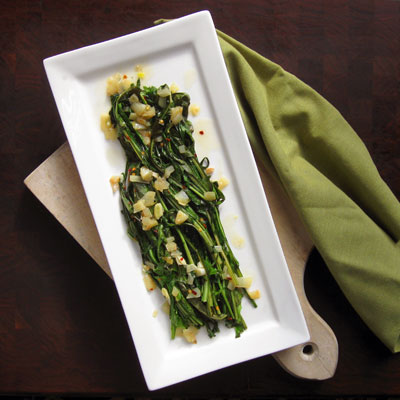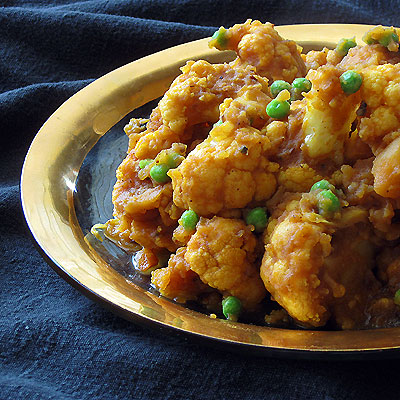
This cake is dense and rich and mildly sweet. It’s a true pound cake, with lots of butter and eggs so don’t expect a true chocolate cake. The chocolate takes a back seat in this version. And though the beets may seems odd, they make this cake very moist.
Chocolate-Beet Pound Cake with Hazelnuts & Crème Anglaise
Print This Recipe Yield 20Source Cake- Jean Anderson & Sauce- Grace ParisiPublishedMakes twenty ½” slices
forgive the order of ingredients here my HTML editor is freaking out!

Ingredients
- 2 raw medium beets, peeled and roughly chopped
- 1 cup plus 2 tablespoons unsweetened dutch process cocoa powder
- 2½ cup plus 2 tablespoons sifted then measured all-purpose flour
- 1 cup finely chopped hazelnuts
- ½ teaspoon kosher salt
- 1 teaspoon baking powder
- 3 sticks unsalted butter, cubed and at room temperature
- 2 cup granulated sugar
- 5 large eggs
- 1 cup whole milk
- confectioners’ sugar for dusting
- crème anglaise
- 2 cup half-and-half
- 1 vanilla bean, split lengthwise
- ½ cup sugar
- 4 large egg yolks, at room temperature
- ½ cup simple syrup (see recipe section)
- 2 teaspoon vanilla extract
Directions
Put the peeled and chopped beets into the bowl of a food processor fitted with the metal blade attachment. Put the lid on and pulse the beets 3 or 4 times, then run the machine about 10 seconds. The beets should be finely chopped, but not yet pureed.
Preheat the oven to 300 degrees F. Butter the bottom and sides of a 10″ x6” loaf pan, then dust the buttered surface with 2 tablespoons cocoa powder, tapping out the excess.
In a small bowl mix 2 tablespoons nuts with the finely chopped hazelnuts. Set aside. Into a larger bowl sift the remaining flour, remaining cocoa powder, salt and baking powder. Afterwards use a whisk to make sure the cocoa is well and evenly distributed.
Using an electric mixer, cream the butter and sugar together on high speed until light and very fluffy. Turn the mixer to low and add the eggs one at a time, followed by the vanilla, and the beets. Continue mixing until well incorporated.
This next step should be done by hand to avoid over-mixing. Stir ⅓ of the flour mixture into the beat mixture, followed by ⅓ of the milk. Repeat two more times with the remaining flour and milk. Folding in the pecan on the last addition. Mix until just incorporated.
Spoon the tick batter into the loaf pan. It will nearly fill the pan. This cake is dense and will not rise a lot. Bake the cake for 1 hour 30 minutes, or until a toothpick inserted in the center comes out clean. The top will crack in baking. This is no problem.
Let the cake cool in the pan and on a rack about 30 minutes, then carefully remove it from the pan setting it cracked side up back onto the rack. Place a plate under the rack. Using a pastry brush, brush the simple syrup over all the outside surfaces. Repeat this process while the cake is still warm 3 or 4 times until all the simple syrup is gone. Let the cake cool completely, about 1 hour. Just before serving dust the top with confectioners’ sugar and some crème anglaise on the side (recipe follows)
Crème Anglaise
Set a large fine strainer over a medium bowl and set the bowl in a shallow pan of cold water.
In a large saucepan, combine the half-and-half and vanilla bean and cook over moderately low heat just until small bubbles appear around the rim, about 5 minutes.
In another medium bowl, whisk the sugar and egg yolks just until combined. Whisk in half of the hot half-and-half in a thin stream. Pour the mixture into the saucepan and cook over moderate heat, stirring constantly with a wooden spoon, until the sauce has thickened slightly, 4 to 5 minutes. Immediately strain the sauce into the bowl in the cold water bath to stop the cooking. Scrape the vanilla seeds into the sauce. Serve right away or refrigerate until chilled.


One of my favorite meals. Affordable, easy to make, and super delicious. Great post Greg!
The Staubb is an excellent investment that will pay for itself over and over.
Great job about describing braising. If you would allow it, I would love to link your page to my “Cooking Explained” page.
Greg, great coq au vin. Perfect for winter days. I like the dash of red wine vinegar at the end and believe straining always makes for a better sauce.
Happy holidays,
Sm
I have always wanted to try making Coq au Vin. Amazing recipe and thank you for nominating me for a Homie. I voted for you!!!
I remember seeing this dish on Good Eats. It looks really good. I get intimidated by certain dishes sometimes. But this one looks really easy to make.
I wish I had time to make that right now, unfortunately, all I have time for now is take-out…
Jillian makes a pretty mean Coq au Vin, but carries on like making it is this arduous process that deserves a hero’s gratitude. I think I will try your four-step method to show her what’s up.
Way to let your inner bistro chef run wild, Mrs. Wells would certainly approve. Braising is my absolute favorite way to cook, especially this time of year. Just cobbled together a Beef Bourguinon to bring skiing later this week, and braised short ribs will be on the menu just after the new year. Your coq au vin looks perfect…tres bien! — S
Mmmmm, coq au vin is only second to beouf bourginon in it’s deliciousness. Perfect for the chilly nights we’ve been having lately! I love staub cookware, it’s beautifully made and lasts forever!
Nicely explained and well presented. I think I’ll make this in my cast iron on the Egg for “Cast Iron Chef” week the first week of the year. My blog turns 1 year old so I’m doing a theme of cast iron that week. Not that cast iron is the gift for 1 year, ha ha.
Adore this type of cooking because it isn’t complicated, healthy and the result can be delightful too.
I want this coq au vin for dinner…
Happy Holidays!
Cheers,
Gera
One of my favorite meals. Affordable, easy to make, and super delicious. Great post Greg!
Eric